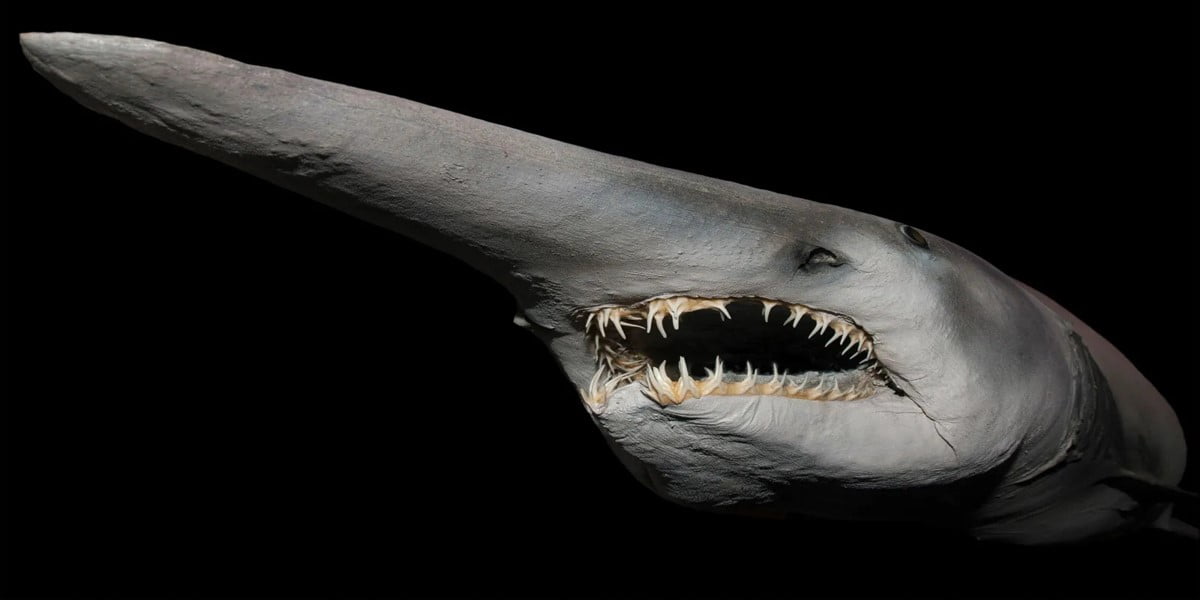Goblin Shark (Mitsukurina Owstoni)
Doodlebrary
- The Goblin shark is a rare, deep-sea species belonging to the family Mitsukurinidae.
- It is often referred to as a “living fossil” due to its ancient lineage, which dates back around 125 million years.
- Known for its unique and somewhat terrifying appearance, it is found in the deep waters of oceans around the world.
- The Goblin shark is one of the most mysterious and fascinating creatures of the deep sea.
- With its unique appearance, ancient history, and specialized hunting mechanisms, it continues to intrigue researchers and marine enthusiasts alike.
- Snout: The most distinctive feature is its long, flat, and elongated snout, called a rostrum. The snout contains highly sensitive electroreceptors to detect prey.
- Jaws: The Goblin shark has highly protrusible jaws, meaning they can extend outward quickly to capture prey. The jaws are armed with sharp, nail-like teeth.
- Body: It has a soft, flabby body with relatively small fins compared to other sharks. Its skin is semi-transparent and pinkish due to the visible blood vessels.
- Size: Adults typically range between 3-4 meters (10-13 feet), although some larger specimens have been reported.
- Goblin sharks are found primarily in deep waters, typically between 200 to 1,200 meters (656 to 3,937 feet) below the surface.
- They are most commonly found in the Atlantic, Indian, and Pacific Oceans, particularly around Japan and other parts of the continental slopes.
- They are slow swimmers but rely on their extendable jaws and sharp teeth to catch prey, which includes fish, squid, and crustaceans.
- Their snout contains sensory organs that can detect the electric fields of prey, aiding in hunting in the dark depths.
- Little is known about the reproductive habits of Goblin sharks due to their deep-sea habitat and elusive nature.
- Like other sharks, they are believed to give birth to live young (ovoviviparous), where eggs develop inside the mother and hatch internally before the pups are born.
- Goblin sharks are believed to be solitary creatures, only coming together for mating.
- They are sluggish swimmers, using their body’s buoyancy to glide through the water rather than actively swimming like other sharks.
- Goblin sharks are not considered a significant threat to humans due to their deep-sea habitat.
- They are rarely caught by fisheries, usually only being caught as bycatch.
- There are currently no specific conservation measures in place for Goblin sharks, but their rarity makes them of interest to researchers and marine biologists.
- The Goblin shark is of great interest to scientists because of its ancient lineage, which provides valuable insights into shark evolution.
- Studying this species helps understand deep-sea ecosystems and the adaptations necessary for survival in such environments.
